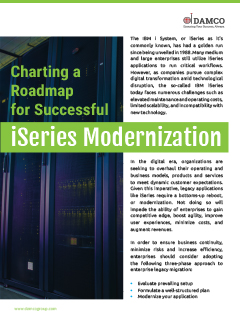Charting a Roadmap for Successful iSeries Modernization
Download the guide to learn:
- How businesses can transform their age-old iSeries systems with a 3-phased modernization roadmap
- How a healthcare company achieved revenue growth and operational efficiency by re-engineering their iSeries application
Fill Out the Form Below to Access the Guide

